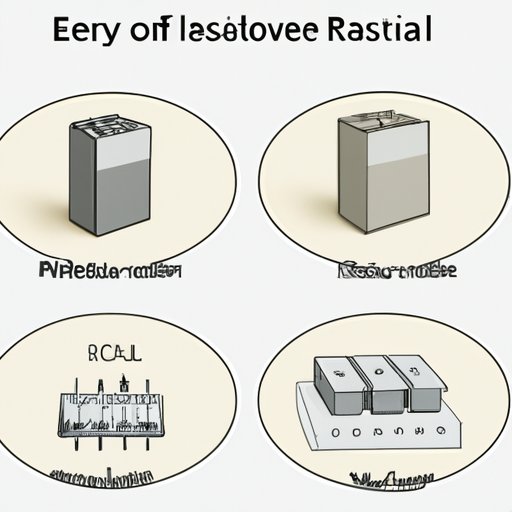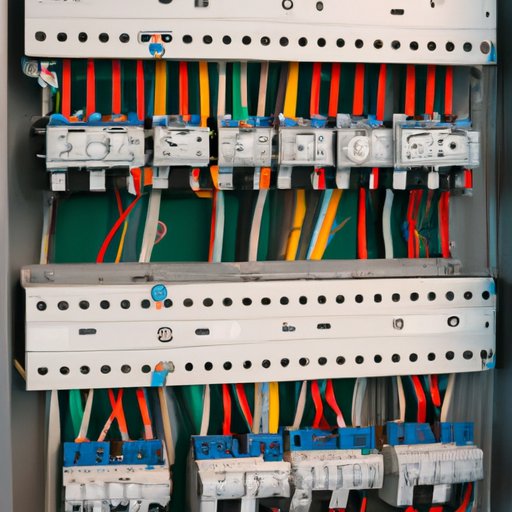Introduction
Relays are essential components in electrical and electronic systems that help to control the flow of electricity. They are used in a wide range of electronic applications, including HVAC systems, household appliances, automobiles, and industrial machinery. This article provides a comprehensive guide to understanding relays, their functions, types, and applications.
All You Need to Know About Relays: A Comprehensive Guide
A relay is a switch or an electromechanical device that is activated by an electrical current. It consists of an electromagnet, an armature, a spring, and a set of contacts. When an electrical current is applied to the relay, the electromagnet pulls down the armature, which closes the contacts and allows the current to flow through the relay. A relay is similar to a switch in that it can control the flow of electricity, but it is different in that it does not need physical contact to perform its function.
The history of relays can be traced back to the early 1800s when the concept of electromagnetism was first discovered. Michael Faraday was the first to demonstrate the relationship between electricity and magnetism, and this led to the development of the first relay in the 1830s.
Relays work by using an electrical current to activate an electromagnet, which then pulls down an armature. The armature closes a set of contacts, allowing the current to flow through the relay and to the connected device. Once the electrical current is removed, the armature returns to its original position, releasing the contacts and stopping the flow of current.
The main components of a relay are the electromagnet, armature, spring, and contacts. The electromagnet is responsible for activating the armature, and the spring ensures that the armature returns to its original position once the electrical current is removed. The contacts are where the electricity flows through the relay.
Some common applications of relays include HVAC systems, household appliances such as refrigerators and washing machines, and industrial machinery such as conveyor systems and assembly lines.
The Role of Relays in Electrical Systems
Relays play an important role in electrical systems by controlling the flow of electricity. They are used in a wide range of applications, including power distribution, motor control, and signal processing. Relays are also used to protect electrical equipment from damage by monitoring the current and voltage levels.
Examples of where relays are used include:
- Lighting control systems
- Motor control systems
- Industrial automation systems
- Control panels
- Power distribution systems
- Signal processing systems
It is important to select the correct relay for the job to ensure that it can handle the voltage, current, and power requirements of the system. Choosing the wrong type of relay can lead to malfunctions and damage to the system.
Relays vs. Switches: What’s the Difference and When to Use Each
Switches are devices that are used to turn on or off an electrical circuit. They are like a simple on/off button that controls the flow of current. Relays, on the other hand, are more complex and offer more control over the flow of electricity.
The main difference between relays and switches is that relays use an electromagnet to control the flow of current, while switches use a physical contact. Relays are used in applications where high power is required, and switches are used in low-power applications.
When to use a relay vs. a switch depends on the power requirements of the system. If the system requires high power, a relay should be used to control the flow of electricity. If the system requires low power, a switch can be used to turn the circuit on or off.
Exploring the Different Types of Relays and Their Applications
There are several different types of relays, each with its advantages and disadvantages. The most common types of relays include electromechanical relays, solid-state relays, and reed relays.
Electromechanical relays use an electromagnet to control the flow of current. They are reliable and can handle high power levels, making them ideal for use in industrial applications.
Solid-state relays use semiconductor devices to control the flow of current. They are faster and more reliable than electromechanical relays, but they cannot handle as much power.
Reed relays use a set of reed switches to control the flow of electricity. They are small and can switch quickly, making them ideal for use in electronic applications where space is limited.
Each type of relay is used in different applications. For example, electromechanical relays are often used in power distribution systems and motor control systems. Solid-state relays are used in signal processing systems and control panels. Reed relays are used in small electronic devices such as cameras and alarm systems.

The Evolution of Relays: From Electromechanical to Solid State
Relay technology has evolved over time, from the original electromechanical relay to the modern solid-state relay. The first relays used mechanical contacts to control the flow of electricity. These were replaced by vacuum relays, which used a vacuum to isolate the contacts and prevent arcing. The vacuum relays were then replaced by gas-filled relays, which used gas to prevent arcing.
The modern solid-state relay uses semiconductor devices to control the flow of current. Solid-state relays are faster, more reliable, and more energy-efficient than previous types of relays. They are also lighter and smaller, making them ideal for use in electronic devices.
Each type of relay has its advantages and disadvantages. Electromechanical relays are reliable and can handle high power levels, but they are slower and heavier than solid-state relays. Solid-state relays are faster and more energy-efficient than electromechanical relays, but they cannot handle as much power.
How to Troubleshoot Relay Problems in Electrical Circuits
Relay problems can cause issues in electrical circuits, such as a failure to start or stop a device. Common relay problems include a stuck armature or contacts that do not close properly. These issues can be caused by a variety of factors, such as worn contacts or a damaged armature.
To troubleshoot relay problems, start by checking the voltage and current levels in the circuit. If the voltage and current are within the expected ranges, check the contacts and armature for wear or damage. If the contacts or armature are damaged, replace the relay.
An Overview of Relay Interfacing and its Importance in Industrial Automation
Relay interfacing is the process of connecting a relay to a control system to control the flow of power. Industrial automation systems use relays to control the flow of electricity in various devices, such as motors and pumps.
Examples of industrial automation applications that use relay interfacing include robotic control systems, power distribution systems, and assembly line control systems. Proper relay interfacing is essential to ensure that the system functions correctly and that the equipment is not damaged.
Conclusion
Relays are essential components in electrical and electronic systems that help to control the flow of electricity. They are used in a wide range of applications, including HVAC systems, household appliances, automobiles, and industrial machinery. Understanding how relays work, the different types of relays, and their applications is important for anyone working with electrical or electronic systems.
In summary, relays offer precise control over the flow of electricity, and their use is essential in many electrical and electronic applications. Understanding the different types of relays, their advantages and disadvantages, and their applications is crucial in selecting the right relay for a specific system.
